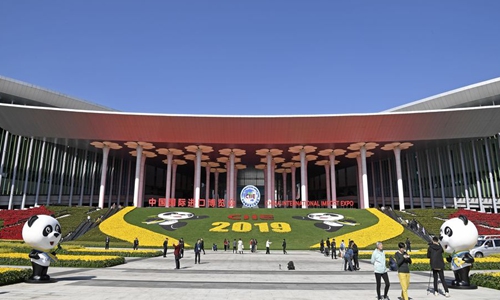Virus impact on exhibition industry beyond expectations: insiders
A total of seven exhibitions in China had been canceled and 281 postponed as of Sunday following the outbreak of COVID19, which industry insiders said deals a blow that is beyond expectations and will likely affect the industry’s operations for the whole year.
The East China Fair – scheduled from March 1-4 and one of the largest regional trade fairs in China that features traders from across the world – has been postponed, without giving an alternative date, according to a notice on the fair’s website.
Another high-profile conference – the China Commodity Markets Insight Forum 2020 that was scheduled for February 19-20 in Beijing by S&P Global Platts – was also postponed.
Most exhibitions scheduled before the end of March in China have been postponed in line with rules, and many domestic companies have canceled their trips to some foreign exhibitions, Zhu Bo, deputy general manager of Star Expo (Beijing) International Exhibition Co, told the Global Times.
Incalculable losses are being incurred, she said. “I attended six international exhibitions overseas, and an average of 15 percent of the exhibition space for Chinese enterprises was left vacant. This will cut exhibition companies’ profits by about 10 to 20 percent,” she said, noting that fees that have been paid for flights, accommodation and booths, among other items, cannot be refunded.
According to industry insiders, the preparation work for large-scale international exhibitions usually takes one to three years, while organizing an exhibition that covers an area of 20,000 square meters costs about 3-4 million yuan ($427,000- 569,000).
Xu Feng, deputy secretary general of the China Convention Exhibition Event Society (CCEES), told the Global Times on Monday that the cancellations and delays at home and overseas affect not only the industry itself but also the real economy.
“For many small and medium-sized trade firms and manufacturers, the number of orders they obtain at exhibitions may account for up to 70 percent of their total in that year,” Xu said.
Amid fierce competition, China’s exhibition industry saw stable growth in recent years. In 2018, a total of 10,889 exhibitions of over 5,000 square meters were held in China, up 5.1 percent year-on-year, according to a report released by the CCEES in mid-2019.
The country’s manufacturing hubs, including East China’s Jiangsu Province, East China’s Shanghai Municipality and South China’s Guangdong Province, host the most exhibitions, partly due to export needs.
As a result of the viral epidemic, the Huawei Developer Conference that was scheduled for February 11-12 has been delayed to March and will be held in the form of an online meeting.
However, Xu said this will probably not change this industry’s offline mode in the long term, as “face-to-face meetings and exhibitions mean business.”
Photo taken on Nov. 9, 2019 shows the National Exhibition and Convention Center in east China’s Shanghai, where the second China International Import Expo (CIIE) was held from Nov. 5 to Nov. 10. (Xinhua/Wang Peng)



